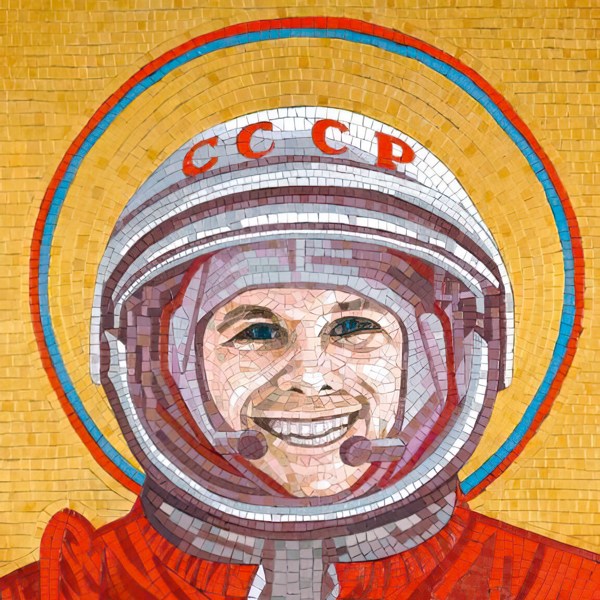Not a helpful response but I don’t know that it is. Can someone give me a rundown? I fear that it might be an attempt to recreate the conclusions of Marxist analysis while distancing the field from Marx because communism bad.
it’s something along the lines of, like, “any country with fiat currency effecively has infinite money,” but i don’t know to be honest. at the very least that’s a super basic rundown
MMT boils down to “sovereign currencies are OP, any goverment with a sovereign currency can print infinite money and not suffer inflation as long as it uses the money to develop production, the US is uniquely OP because their sovereign currency is also the IRC.”
It’s a nominally liberal smokescreen to explain why the US can do whatever it wants with the dollar without discussing imperialism or the US’ chokehold on global financial institutions.
MMT only works when applied to USD based on the extraordinary privilege of being the hegemonic global reserve currency. Any other country will inevitably encounter inflation issues, primarily due to currency devaluation on foreign exchange markets. In fact all instances of hyperinflation have been due to excessive money creation, albeit under extenuating circumstances, typically oppressive foreign debt.
With the accelerating trend of dedollarization, the USD will soon behave like all other currencies, beholden to a nation’s balance of payments.
I have to partially disagree that proponents of MMT don’t talk about imperialism. I mean, yes, a lot don’t. But Marxists or Marxist-adjacent folks like Michael Hudson or Steve Grumbine talk about it all the time.
Depending on how broadly one defines imperialism, MMT thinkers talk about it all the time when they discuss monetary sovereignty.
To get a full rundown of MMT, you need to read the works of Michael Hudson, specifically Killing the Host and Super-Imperialism.
MMT extends from Marx and other classical theories of money, as opposed to the neoliberal conception of money that rules the entire world currently through the US dollar empire administered by the IMF and World Bank.
To summarize, according to MMT money is not some kind of scarce resource, it’s an accounting tool that governments can use to mobilize workers and resources in their economy. Governments do not have to take in money through taxes or take on debt in order to pay for things in their own currency - they can just print it.
This is because money is not a scarce resource that governments happen to interact with, all money is created by governments. Money is a commodity with the unique use-value of being legal tender for paying your taxes. Every bill is an ‘IOU’ from the government, which you can return to them when they come to collect taxes - which they can do solely because they have a monopoly on violence in their sovereign territory. And so, as well as destroying the IOUs at will, the government can create them at will and use them to essentially order people to do things - by paying them something which that person needs to have when it comes time to pay their taxes, in order not to have violence done to them by the state.
Under a neoliberal understanding, printing money always results in inflation, through an increased money supply relative to the amount of goods in the economy. However, this completely ignores the fact that targeted government spending can increase economic activity - spending money to employ someone who would otherwise be unemployed, or to run a factory that would otherwise be shut down, increases the demand for money at the same time as it increases the supply.
Some degree of destruction of money through taxation remains necessary unless growth is truly astronomical, but the understanding that a government has complete control over when and where money is taxed away, and a scientific understanding of the effects of taxation on different things, enables far greater economic control. The primary method of taxation recommended by Michael Hudson would be a land tax, essentially taxing away the increase in land value created through the government’s spending on infrastructure, turning land rent from something collected by landlords and mortgage companies into the patrimony of the government, and freeing personal income earned through labor as well as the circulation of goods from the friction of regressive taxes like VAT and income tax.
Now, if the government continued to just print money and never taxed any away, that could lead to hyperinflation, as it did in Zimbabwe - but the key factor in that situation was the lack of a government monopoly on violence that would let it enforce taxes. So they simply kept printing more and more money to pay for things, generating a fountain of money with no sink for it to return to.
The other type of situation that can cause hyperinflation is what happened in the Weimar republic, in which huge reparations had to be paid to France, Britain and the US after WW1. These reparations, although denominated in currency, were paid almost entirely in goods and materials, so the German economy was stripped of real commodities until there was essentially nothing for money to buy, rendering it worthless.
These two examples are brought up whenever neoliberal economists need to justify privatization and reducing government spending, but they are both extraordinary circumstances caused by external factors, not by the respective governments’ fiscal policies. The widespread suffering, unemployment and stifled economic growth through the entire Global South wherever the IMF’s talons have sunk in, however, is caused by fiscal policy.
Why does the IMF have the power to dictate the fiscal policy of sovereign nations? Because of the injustices of history.
During the ‘direct colonization’ period of imperialism, the industries of colonized nations were destroyed and repurposed solely for the extraction of resources to send to the colonist nations. India, which comprised almost a third of the world’s economy before the British arrived, was reduced to a paltry 3% after independence. Where previously it had enormous texile industries, both growing and processing the fibres into finished garments, it now had only the plantations for producing material to send to England for English workers to weave into clothing.
This meant the Global South as a whole had an immense lack of industrial tools - spinning machines, furnaces, power stations, tractors, all the forces of production necessary for turning the natural resources of their (supposedly) newly sovereign territory into goods for both domestic consumption and international trade. For finished goods, they were totally reliant on the very nations that stripped them of wealth under colonialism - plus, the newly supreme economic giant of the US.
This is still the case today, but with the addition of one even more important factor - since the beginning of the postwar era, the US has used its staggeringly huge, highly mechanized and efficient agriculture sector to flood the world market with cheap food and destroy the local food agriculture of Global South nations. By selling staple crops to these countries for far less than their farmers could afford to sell theirs - or even giving them away for free through ‘food aid’ - they drove local farms out of business and ensured complete dependency on US agriculture. This process of getting the Global South to surrender food sovereignty was eased along by paid-off comprador governments, political manipulation and extreme violence.
Why is this a problem? Because in order to keep buying US food, these nations now need to acquire US dollars. The only ways to do this are by selling goods to the US, or by taking loans from organizations with access to US dollars - such as the IMF and World Bank. In both these cases, the US gets to set the terms: it can demand an extremely unequal trade ratio between raw materials denominated in the local currency, and food (or finished goods) denominated in US dollars; and it can set punishing interest rates that ensure the debt can never be paid off, ensuring an even more desperate need ro obtain dollars.
What does this ultimately boil down to? The US has a monopoly on violence across most of the world, through sanctions, starvation and bombing, and so it can extract goods and services from the Global South by paying in IOUs that it can demand back through the IMF. The US has essentially extended its currency sovereignty and right of taxation across the whole world, while suppressing those very mechanisms within its victim nations that they could use to direct the development of their own economies.
When an African nation is commanded to stop providing healthcare, or close down a schools program, or stop building transport infrastructure (or to sell these things off to private interests) - to cut down its spending - in order to collect dollars for debt service, they are being compelled to follow an economic doctrine totally counter to that enjoyed by the US global empire. That said, even the imperial core of the US homeland and its European allies are coming under attack by neoliberalism, as the ideology splashes back and the finance vultures at the head of the empire seek out more and more scraps of wealth to gobble up wherever they find them.
By contrast, China has enjoyed immense economic growth for decades thanks to its centrally controlled policy of state-owned national developments banks essentially taking on the role of money printing by writing loans to both private and state-owned enterprises, structured for the express purpose of building up industries and not for turning a financial profit. An even clearer example of this was in the USSR under Stalin, who created a domestic consumption model that is possibly the most advanced form of economy the world has ever seen, in terms of mobilizing workers and resources for rapid industrial development.
This was only possible by understanding that money is purely a unit of accounting that can be bent to the government’s will - something the moron Krushchev immediately destroyed, when he saw the ‘national debt’ (actually a measure of Soviet citizens’ savings, the only consequence of which was having to pay interest to those citizens - in turn no problem at all, as long as the additional money entering circulation, i.e. the amount withdrawn and spent on goods - not even the money being created! - could be absorbed by the rate of economic growth, as it very clearly could) and panicked.
The USSR and China had one clear advantage though - access to various necessary raw materials within their own borders. For a self-sufficient country like the Soviet Union, implementing MMT (or rather in Stalin’s case, independently deriving its practical applications on his own) presents no challenge and immediately results in massive economic growth. For other nations that are limited by the requirement to obtain certain goods by international trade, they can be hampered - but only by intentional, malicious sabotage from the global hegemon.
In any case where financial austerity is not being imposed upon threat of immediate starvation, any nation that implements MMT would be able to mobilize its own workforce and resources to their maximum potential and rapidly grow their economy, while finding whatever goods they need on the world market to trade fairly in exchange for the goods their particular country happens to be blessed with. But for that to happen, dollar hegemony has to be ended, which will only happen with a global effort to dedollarize international trade and forgive dollar debts.
I’m curious as to how you see Hudson’s Superimperialism as an explanation and confirmation of MMT, rather than (as I have understood it) a negation (and furthermore how you interpret it as a Marxian/Marxist theory).
While MMT could theoretically work in a vacuum, was you’ve illustrated, I’ve come to understand the balance of payments issue absolutely critical to its stable functioning. International payments cannot be balanced vis a vis trading partners when a country continues creating money, even if such creation is balanced internally (or have I gotten this completely wrong?). That’s why I argue that MMT only “works” when applied to the USD, as it’s the only currency exempt from typical balance of payments considerations.
Superimperialism is Modern Monetary Theory, as in, its entire theoretical basis is the Modern theory of money which says money is a unit of account that governments can create and destroy at will, and can use to create targeted growth of the industrial economy. (And despite being called ‘Modern’, as detailed in Killing the Host it can actually trace its roots all the way back to ancient Mesopotamia, four thousand years ago).
This is completely contrary to neoliberal theory, in which money is a scarce resource whose properties and origins are completely mysterious and unrelated to governments - they’ll say something about trade originating in directly bartering goods, which eventually evolved into bartering goods for gold and silver due to convenience, or some other such counter-historical fairy story. Killing the Host has an excellent section on the real origin of money in the palace economies of ancient Babylon and Assyria.
A government can either use its ability to print money to fund industrial development, or, if it’s been hijacked by the power of financial capital, it can surrender its central bank to private control (as is the case with the Fed, or the Bank of England) which will print money to give to other private banks, for the purpose of making loans that strip money out of industry, inflate the prices of real estate, stocks and bonds, and grind the real economy down under the weight of unpayable debt and rent. There’s no alternative outside these two scenarios, either money is being mainly directed into the real economy or into the financial economy (with the addition that the rate of money printing may also change, as dictated by whoever controls the levers of power).
The actual process and results of this can only be explained by Modern Monetary Theory. Neoliberal theory has been developed by the financial captialists to “explain” why things must proceed as they have done, but this is purely obfuscation of the actual truth. Modern Monetary Theory also doesn’t make any prescriptions, it just describes how money is created and destroyed and the effects of the different methods by which governments can deploy money. Wielding money to create economic growth and increase material wealth is just the most obviously correct way to use this tool, for us workers.
Balance of payments has nothing directly to do with the supply of money. In a fair trade, the only thing that matters is the differential between the physical masses of goods flowing into and out of a country (specifically, the total true Marxist value of goods, i.e. the number of hours of labor time embodied by the goods, modified by the momentary fluctuations of supply and demand) - not the denomination of these goods in their respective local currencies.
The problem comes when money must be held aside while goods are in transit - the stability of the currency then becomes an issue if the goods of country A were exchanged for X of country B’s money, the goods are in transit for a month, and then when they arrive and the money is finally received there has been inflation and X of B no longer buys the equivalent (Marxist) value of A’s goods in the form of B’s goods. This time may be extended further if country B has a lack of goods that country A wants to buy immediately. Suddenly, the currency being held by an external party is no longer just an internal unit of account, but has become a financial asset.
Solving this problem is difficult, and dollar imperialism was kickstarted by the very fact that US dollars were extremely stable in the 50s thanks to the guaranteed basket of goods that dollars could buy from the huge industrial economy of the US. The US then leveraged this demand for US dollars that let it pay other nations with its own IOUs to be able to encircle the world with its military forces, and finally locked this advantage in place by forcing countries to take loans denominated in dollars from the IMF.
The problem with the US is specifically that it prevents other countries from using MMT. Many Global South countries could easily become food self-sufficient if they were permitted to use government spending to develop food agriculture, but they are forbidden from doing so, because that would deprive the US of the ability to sanction and starve them if they step out of line. Thus, they’re beholden to obtaining dollars only because of the time gap between the US cutting off their food and their own agriculture reaching the level that it can provide for their population.
And likewise, many other industries for finished goods could be built up in these nations, but instead are suppressed so that their natural resources can only be shipped out as raw materials. If the governments could print and deploy money for their own purposes, they could build factories and employ workers in these industries, generating wealth for the country - but they’re prevented from doing so by IMF edicts.
BRICS have held talks on finding an alternative to the dollar for international trade, such as an international bank with the ability to issue ‘bancors’, but there has been little progress so far. But in principle, as long as goods can be traded fairly on the world market, a country using MMT to mobilize its own economy internally should have no effect on its ability to trade.
You do raise the point that there may be difficulties for countries lacking key resources that would then have to rely heavily on trade, though this is only a complication and not a dead end, and there are many other countries that clearly have the size and resources to become self-sufficient and prosperous but are not allowed to do so - think of many huge Central African nations with very rich reserves of both minerals and energy which they could be using to build their own economies, but instead hand over to the Global North.
The other problem here would be a slow start to industrialization if the tool base has to be developed from the ground up in countries with basically no factories or machinery at all, but here again China is offering developmental loans (functionally, access to industrial machinery and infrastructure building) to kick-start this process.
Thank you for the detailed response, I genuinely appreciate and have come to a deeper understanding of the concepts.
It’s a deliberately chameleon-esque “theory” that obfuscates its Keynesian roots with the massive dollops of economic jargon that every “explanation” of the theory you’ll encounter describing it indulges in. The end result is that its incomprehensibility leads to people ascribing to it what they want it to be, slapping whatever label they want onto it - a “theory” that works like mayonnaise, something supposedly “good on anything” - for all political ideologies.
For neoliberals and soc dems, it’s the perfect bandaid for the ails of contemporary capitalism; for some leftists, it’s not only “compatible” with socialism but they’d argue that historical socialism actually “sleepwalked” through the precepts of MMT “unknowingly.” This is why you’d see some online leftists on the likes of Hexbear and Reddit who are very vocal on their support of “MMT.” Some of the other comments in this thread actually represent the typical argumentation pattern of “leftist MMT” where they travel back in time to historically backdate past socialist economic successes as “representative” of “MMT in practice.” The “leftist” argument for MMT is therefore unfalsifiable because any historical socialist economic policy with sovereigntist characteristics can be appropriated and claimed as demonstrating “MMT in action, if not in name” just like how some Western Marxist historians once tried to untenably label every mildly populist historical figure from the Roman Republic like Julius Caesar as “proto-Marxist.” TL;DR, “leftist MMT” would claim it’s a DLC to classical Marxist economics when in reality, it’s the Keynesian competitor.
In practice, MMT is the modern reincarnation of the FDR New Deal snake oil, something meant to provide a backstop to the contradictions of contemporary capitalism and divert popular attention from the real alternative of socialism, just as how the original New Deal suppressed support for the socialist path. I’ve written my immense skepticism on it before but here’s a proper critique from a Marxist economist:
This brings me to the third question: what is the aim of MMT? MMT does not touch on the important issues of the failure of capitalism to deliver social needs and the underlying exploitation of the many by the few. On these questions, MMT has nothing to say, and indeed different MMTers have different views. Most, if not all MMTers (like traditional Keynesians), want governments to intervene to meet social needs. Some even support socialist measures to replace the law of value and the capitalist mode of production; others (like Kelton) don’t. Kelton even insists that is not the point of MMT. She simply wants to show that it is a myth that the state cannot run up deficits without consequences. Again, this does not seem very new or radical – nor even correct in all circumstances.
[…] Where MMT does differ from Keynesian-type fiscal deficit spending is that its proponents see government deficits as permanent in order to drive the economy up and achieve full employment of resources. In this way, the state becomes the ‘employer of last resort’. Indeed, the MMT exponents claim that unemployment can be solved within capitalism. So there is no need to change the social formations based on private capital. Politicians and economists only need only realise that state spending ‘financed’ by money creation can sustain full employment.
[…] It seems that MMT eventually just boils down to offering a theory to justify unrestricted government spending to sustain and/or restore full employment. That’s its task, and no other. This is why it attracts support in the reformist left of the labour movement. But this apparent virtue of MMT hides its much greater vice as an obstacle for real change. MMT says nothing about why there are convulsions in capitalist accumulation. It has no policy for radical change in the social structure.
This is the most telling critique of MMT: that, because it fails to recognise the capitalist sector in its macro model of the circuit of money and instead only focuses on ‘the state’ and ‘the non-state’, it can tell us nothing about why and how there are regular slumps in production and investment in modern economies.
But the answer to unemployment or the end of crises does not lie in the simple recourse of issuing money, as MMT claims. MMT ignores or hides the social relations of exploitation of labour for profit. And by selling the snake oil of MMT instead, it misleads the labour movement away from fundamental change.
This brings me to the third question: what is the aim of MMT?.. [Kelton] simply wants to show that it is a myth that the state cannot run up deficits without consequences. Again, this does not seem very new or radical
The author answers their own question here: the aim of MMT is to understand the relationship between monetary supply and inflation. It’s “this is how the world works,” not “here is how the world should work and how we should get there.” Criticizing it for not incorporating a critique of capitalism is like criticizing the germ theory of disease for not incorporating a critique of capitalism.
And setting aside how much of MMT is new, it’s absolutely radical to question whether printing more money always leads to inflation. That’s been a fundamental axiom in western economic thinking for the last half century or so. “How are you going to pay for it” is a perennial political question in large part due to this.
Very much agree, another way to approach the problem is by asking what exactly is an economy. Fundamentally, it’s a system for ensuring that labor and resources are allocated to meet the needs of the people living in a particular society. Money is simply the mechanism that’s used to direct the allocation.
From this perspective, what a government does when it issues currency is stimulate activity in a particular sector of the economy where that currency is allocated. For example, Chinese government starting to do investments into chip development is resulting in that sector of the economy growing. Similarly, when private spending and markets allocate funds towards some area of the economy then supply grows to meet that demand.
That’s literally all this is, and obviously the government can issue as much currency as it wants, there’s no fundamental problem here because all it’s doing is directing the growth of the economy. Hence, as you point out, the issue isn’t with the money supply but how that money is used. The problem we have under capitalism is with labor and resource allocation being driven primarily by the interests of the capital owning class. Their goal is to direct labor to grow their capital, with any social benefits being strictly incidental. This breaks the connection between the government issuing currency and that currency being used to direct labor in a productive way.
Mesopotamian Rulers allocating currency to their militaries directed their economy to grow supporting those enterprises. This stuff has deep roots
indeed
Honestly everyone should probably read the article you linked. Like holy shit, it goes into so much depth.
I think it’s the best theory out there that explains the nature of money and how it works in the economy. In my opinion it provides superior explanations for how money works compared to what neoliberalism can provide.
Do liberals like to latch onto it in order to come up with dreams of social democracy that works by printing money? Sure, and they’re wrong. But in terms of its explanatory power for a theory of money? Yeah it’s pretty dope.
We’re not going to be eliminating the money form any time soon. I think the central banks in Beijing, Pyongyang, Havana etc would do well to study and apply MMT.
BTW if y’all are interested - NonCompete made a decent video covering MMT, consider checking it out: https://youtube.com/watch?v=r_15BJu6n24








